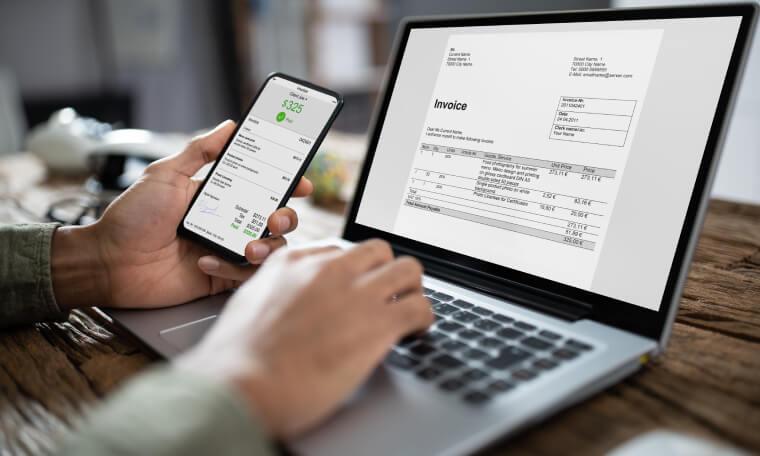Running a business smoothly requires systems that communicate and work well together. When it comes to accounting software, Xero stands out not only for its cloud-based power but also for its ability to integrate seamlessly with various business tools and workflows. Whether you’re managing sales, expenses, payroll, or reporting, Xero connects the dots to make your financial processes more efficient and less time-consuming. How Xero Integrates with Your Business Workflow
In this article, we’ll explore how Xero integrates with your business workflow, highlighting key features and popular integrations that help automate tasks and keep your operations running smoothly.
Why Integration Matters for Business Workflows
Businesses today rely on a wide array of digital tools: CRM systems, payment gateways, inventory management, payroll services, and more. If these tools operate in silos, it can lead to duplicated efforts, errors, and inefficiencies.
Integration means your software works together — data flows automatically between systems without manual input. This boosts productivity, reduces mistakes, and gives you a clearer view of your overall business health.
Xero was designed with integration in mind, supporting hundreds of third-party apps and offering an open API for custom solutions. Let’s dive into how Xero fits into your business workflow.
Xero as the Central Hub for Financial Data
At its core, Xero is a cloud accounting platform that serves as the central financial hub of your business. Here’s how it streamlines workflows:
- Real-time bank feeds: Xero connects directly to your bank accounts, importing transactions automatically.
- Invoicing and billing: You can create and send invoices, track payments, and record bills within Xero or through connected apps.
- Expense management: Upload receipts and expenses via the mobile app or integrate with expense tracking tools.
- Payroll: Process employee payments, taxes, and leave management either directly in Xero or through payroll partners.
- Reporting and compliance: Generate tax-ready financial reports and share access with your accountant instantly.
By consolidating these functions in one platform, Xero reduces the friction of managing finances across multiple systems.
Popular Integrations That Boost Business Efficiency
Xero’s extensive app marketplace includes hundreds of integrations designed to fit various industries and business needs. Some of the most popular categories include:
1. Payment Gateways
Accepting payments quickly is crucial for cash flow. Xero integrates with major payment providers such as:
- Stripe
- PayPal
- Square
- GoCardless
These integrations allow customers to pay invoices online instantly, with payments automatically recorded in Xero, speeding up reconciliation.
2. Inventory Management
For retail and product-based businesses, inventory control is vital. Xero connects with apps like:
- DEAR Inventory
- TradeGecko (now QuickBooks Commerce)
- Unleashed
These tools sync stock levels, sales orders, and purchase orders with Xero’s accounting data to maintain accuracy across your workflow.
3. CRM Systems
Customer Relationship Management (CRM) tools help manage sales pipelines and customer interactions. Integrating Xero with CRMs like:
- HubSpot
- Salesforce
- Zoho CRM
allows seamless transfer of customer and invoice data, helping sales teams generate quotes and invoices directly from CRM systems.
4. Expense Management
Tracking business expenses is simpler when integrated with apps like:
- Receipt Bank (now Dext Prepare)
- Expensify
- Hubdoc
These tools capture receipts via photo, extract data automatically, and sync with Xero, reducing manual data entry.
5. Payroll Solutions
While Xero offers built-in payroll in some regions, many businesses use integrations with:
- Gusto
- Deputy
- TSheets
to manage employee hours, payroll processing, and compliance efficiently alongside Xero’s accounting data.
Automating Your Workflow with Xero Integration
Beyond individual app connections, Xero supports workflow automation through tools like:
- Zapier: Connects Xero to thousands of apps to automate tasks such as creating invoices from form submissions or syncing contacts.
- Xero API: For businesses with specific needs, the API allows custom integrations to tailor workflow automation.
By automating repetitive tasks, you save time and reduce errors — freeing up your team to focus on growth and customer service.
How to Integrate Xero Into Your Business Workflow: Step-by-Step
Step 1: Assess Your Business Needs
Identify the key processes that could benefit from integration — invoicing, payroll, inventory, payments, or expense management.
Step 2: Explore the Xero App Marketplace
Browse Xero’s app store to find software that matches your needs. Consider apps with strong reviews, active support, and relevant features.
Step 3: Connect and Configure
Most apps offer easy setup with step-by-step instructions. Connect your accounts, authorize data sharing, and customize settings like invoice templates or tax codes.
Step 4: Train Your Team
Ensure staff understand how the integrated systems work together. Provide training on new workflows and monitor for any issues.
Step 5: Monitor and Optimize
Regularly review integration performance. Look for bottlenecks or mismatched data and adjust settings or add new integrations as your business evolves.
Benefits of Seamless Xero Integration for Your Business
- Increased Efficiency: Automated data flows reduce manual entry and speed up processes.
- Improved Accuracy: Fewer errors due to duplication or manual transcription.
- Better Cash Flow: Faster invoicing and payment processing mean healthier finances.
- Scalability: As your business grows, Xero and integrated apps grow with you.
- Real-Time Insights: Consolidated data enables timely financial reporting and decision-making.
- Enhanced Collaboration: Share accurate data with your accountant and team effortlessly.

